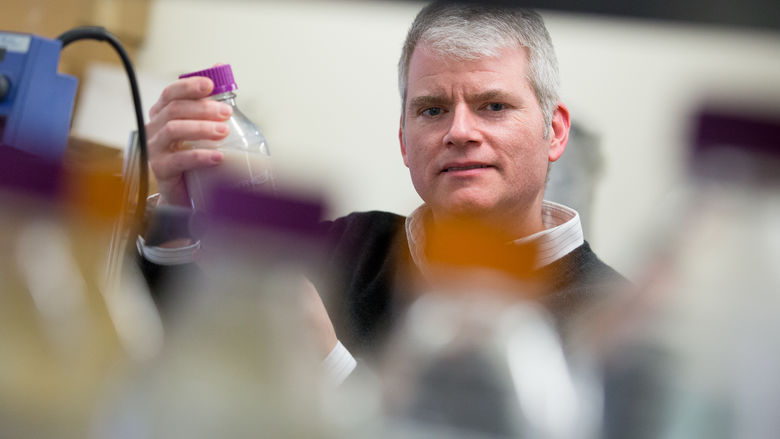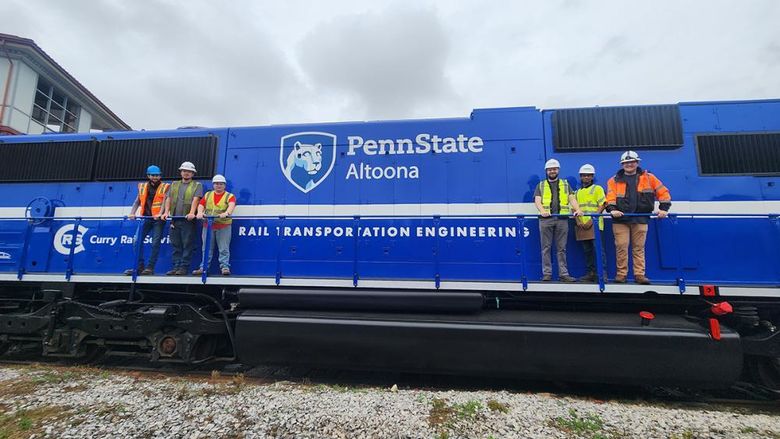
Authorized under the Fixing America’s Surface Transportation (FAST) Act, the grant awarded to the Region 3 consortium includes $14.17 million in federal funding over five years, with $2,570,600 appropriated and available at this time.
UNIVERSITY PARK, Pa. — Transportation infrastructure in Pennsylvania and the Mid-Atlantic region is expected to benefit from a multi-university transportation research program led by Penn State, focusing on improving the durability and extending the life of the nation’s roads, railways, bridges and transit systems.
The initiative is part of the U.S. Department of Transportation’s (USDOT) 2017 Region 3 University Transportation Centers (UTC) Program. Penn State, through the Thomas D. Larson Transportation Institute (LTI), will lead the consortium including George Mason University, Lehigh University, Morgan State University, University of Delaware, Virginia Tech University and West Virginia University — otherwise known as the Mid-Atlantic Center for Integrated Asset Management for Multi-Modal Transportation Infrastructure Systems (CIAMTIS).
“This is a major achievement, not only for our team at LTI and the Department of Civil and Environmental Engineering faculty who worked closely on the proposal, but also for the entire College of Engineering,” said Justin Schwartz, Harold and Inge Marcus Dean of Engineering. “The College of Engineering has some of the greatest students and faculty in the country. This grant reaffirms our national research and educational leadership, which will ultimately support real changes in our country’s transportation infrastructure. We will all benefit from this program.”
Authorized under the Fixing America’s Surface Transportation (FAST) Act, the grant awarded to the Region 3 consortium includes $14.17 million in federal funding over five years, with $2,570,600 appropriated and available at this time. Both federal and non-federal dollars will fund the research, with up to $14.17 million from the U.S. Department of Transportation and a matched amount in non-federal funds anticipated. State transportation agencies from each respective university’s home state will primarily fund the non-federal portion of the program, with select industry partners expected to contribute as well, with up to $28.4 million anticipated.
“This grant is a significant step towards improving our nation’s transportation infrastructure,” said Eric Donnell, professor of civil engineering at Penn State, director of LTI and the principal investigator on the proposal team. “The federal funding alone will go a long way to support advancements in transportation infrastructure research, education and outreach, but matched funding will allow the UTC members to go the extra mile and work with transportation agencies in the mid-Atlantic region to implement solutions to infrastructure challenges.”
According to Donnell, all partners in the consortium will seek to collaborate with materials suppliers, contractors, railroad companies, technical societies and other transportation agencies.
By working with key agencies and industry partners, CIAMTIS will focus on three key research areas: application of innovative materials and technologies; condition assessment and health monitoring; and infrastructure management and innovative financing. Through these efforts, CIAMTIS will ultimately address some of the most critical issues in the region, as identified by the 2017 American Society of Civil Engineers’ (ASCE) infrastructure report card. These include the maintenance, repair or replacement of structurally deficient or functionally obsolete bridges; development of asset management systems for transit systems; creation of longer-lasting pavements; improvement of the existing rail system and use of sensing and simulation; structural health monitoring; and non-destructive evaluation to assess bridge conditions.
“Nobody wants to receive a 'D-plus' rating on a report card," said Donnell. "To help address some of these issues, we’ve brought together world-class researchers and facilities to conduct applied, high-impact research that can be directly implemented in the region. We will be looking at multiple modes of transportation ranging from highways and transit to air and maritime, with an emphasis on highways and rail.”
To ensure rail transportation is adequately addressed, Donnell enlisted the expertise of colleagues at Penn State Altoona, which offers the nation’s first and only bachelor of science degree program in rail transportation engineering. The research and expertise pulled in from the Altoona program will be a key contribution to the UTC consortium, and underscores the breadth of Penn State’s capabilities and the role LTI plays in the University’s transportation engineering efforts.
“We’re excited to partner with other universities and our rail transportation engineering faculty in Altoona on this important research endeavor,” said Penn State Vice President for Research Neil Sharkey. “LTI’s multidisciplinary approach, as well as the established relationships LTI faculty and staff have with industry partners and agencies, make the Institute an excellent fit to lead this UTC program.”
In addition to research, CIAMTIS will also work to improve education and workforce development programs; hold seminars, workshops and training courses; connect students with transportation industry employers; and conduct K-12 outreach to attract new entrants into the transportation field.
The results of this five-year project are expected to be far-reaching, benefiting the state, region and nation, according to U.S. Rep. Glenn "GT" Thompson.
“I am proud of Penn State for leading this outstanding consortium of universities in this transportation study,” said Thompson. “Transportation touches the lives of every American, and the research from these seven universities will examine various aspects of the transportation industry — from technology, to safety and management, to education. I have no doubt that this study will provide students at these universities with the tools they need to become the next generation of transportation leaders.”
For the Pennsylvania Department of Transportation (PennDOT), which is expected to contribute a significant amount of funding for the Pennsylvania universities involved in the consortium, the grant will provide tangible benefits for the Commonwealth.
“We congratulate the Larson Transportation Institute for winning this important federal grant that will help those of us responsible for day-to-day management of transportation networks to access new approaches to extending the service life of our assets,” said PennDOT Secretary Leslie S. Richards. “This research complements our efforts to strengthen our county-based maintenance operations and ensure we are stretching taxpayers’ dollars as far as possible to deliver smoother rides and a better overall transportation experience.”
A total of 13 UTCs applied to the re-competition for the three regions, with the University of Maine and Rutgers University selected to lead region 1 and region 2, respectively. For more information about the UTC program, visit https://www.transportation.gov/utc.
The Thomas D. Larson Pennsylvania Transportation Institute is Penn State’s transportation research center, housed within the Department of Civil and Environmental Engineering. Since its founding in 1968, the Larson Institute has maintained a threefold mission of research, education and service. The Institute brings together top faculty, world-class facilities and enterprising students from across the University in partnership with public and private stakeholders to address critical transportation-related problems.





